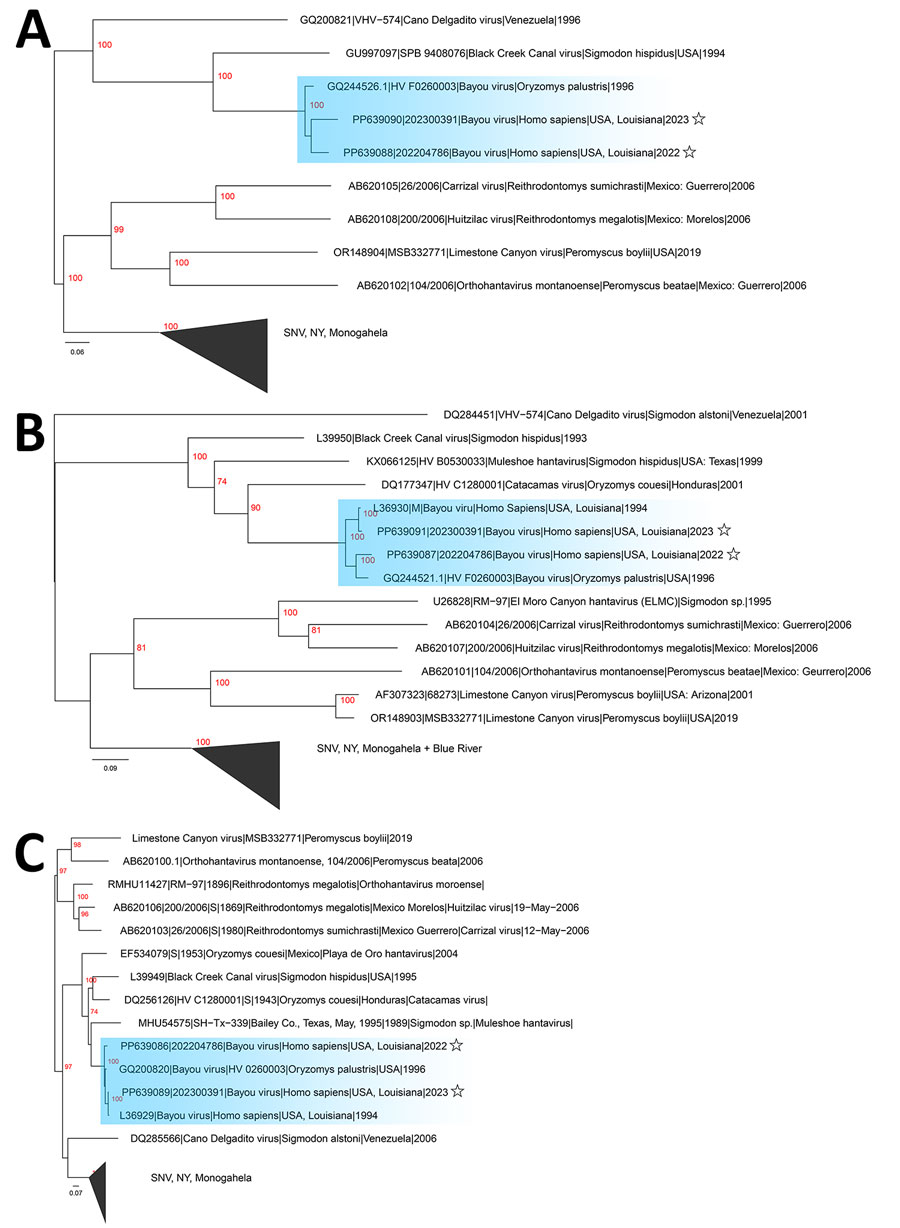Volume 31, Number 2—February 2025
Research Letter
Bayou Hantavirus Cardiopulmonary Syndrome, Louisiana, USA, 2022–2023
Figure

Figure. Inferred phylogenetic relationships between Bayou viruses from the United States and other New World orthohantaviruses. Trees were generated by maximum-likelihood using full-length large (A), medium (B), and small (C) segments. Major clades are collapsed and labeled. Trees are midpoint rooted with bootstrap support (n = 1,000 iterations) highlighted in red on each node. The Bayou virus clade is highlighted in blue. Stars indicate new sequences. Scale bars indicate nucleotide substitutions per site.
Page created: January 15, 2025
Page updated: January 31, 2025
Page reviewed: January 31, 2025
The conclusions, findings, and opinions expressed by authors contributing to this journal do not necessarily reflect the official position of the U.S. Department of Health and Human Services, the Public Health Service, the Centers for Disease Control and Prevention, or the authors' affiliated institutions. Use of trade names is for identification only and does not imply endorsement by any of the groups named above.